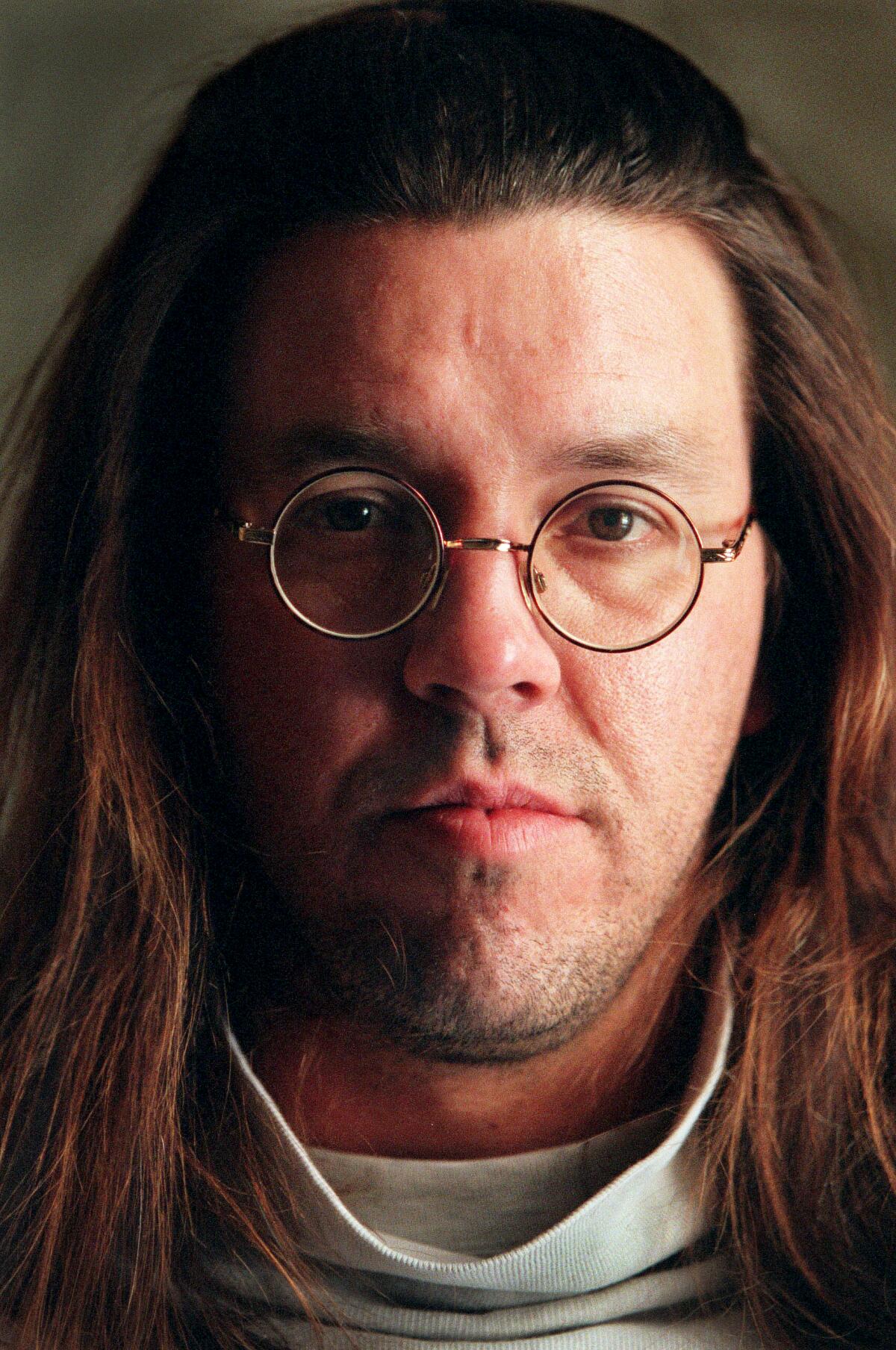Sign up for our Book Club newsletter
Get the latest news, events and more from the Los Angeles Times Book Club, and help us get L.A. reading and talking.
You may occasionally receive promotional content from the Los Angeles Times.

On the Shelf
Something to Do With Paying Attention
By David Foster Wallace
McNally: 152 pages, $18
If you buy books linked on our site, The Times may earn a commission from Bookshop.org, whose fees support independent bookstores.
In 1996, shortly after the publication of “Infinite Jest,” David Foster Wallace took courses at Harvard University on accounting and federal tax law. He had an idea for a new novel: an exploration of boredom set in an IRS office, which to his credit does seem like the most boring place imaginable. Ever the overeager researcher, Wallace became as fluent in the tax code as any agent. By the time the resulting work was published in 2011, unfinished, under the title “The Pale King,” Wallace had been dead for three years.
Like his other novels, “The Pale King” is an elaborate assemblage of disparate segments amassing into a suggested superstructure of narrative activity. An overarching plot is merely hinted at, signaled to, but the novel is rich in characterization. The most interesting and successful parts feature a narrator named David Wallace, a directly metafictional device that the author, despite the experimentality and self-awareness of his fiction, rarely used. The fictional memoir sections allow Wallace to blend his narrative theatrics with his nonfictional voice, resulting in a hybrid style it’s a shame he never got to explore further.
During the lengthy period of creative frustration in which “The Pale King” was composed, Wallace produced numerous stories and essays, but “the long thing” eluded him. Anxious about the widening gap of time between “Infinite Jest” and its follow-up, he often contemplated taking an advance from Little, Brown to force him to finish the novel. Before his death, he was able to polish a couple of selections from the work-in-progress satisfyingly enough to publish them in the New Yorker and Harper’s. And according to his biographer D.T. Max, he considered releasing the longest coherent segment — a novella-length story of how one IRS employee came into “the Service” — “as a short stand-alone novel.”
David Foster Wallace was as much a skeptic as he was an idealist, and his insights as both were his singular gift.
Fourteen years after Wallace’s death and 11 years since the release of the novel in which it first appeared, McNally Editions is doing just that: What was originally Section 22 of “The Pale King” is now “Something to Do With Paying Attention.”
Technically, it’s a reissue. McNally Editions, in its own verbiage, “reissues books that are not widely known but have stood the test of time, that remain as singular and engaging as when they were written.” Other titles in the series are Kay Dick’s queer dystopian tale “They” from 1977; Han Suyin’s “Winter Love” from 1962, about an affair between two women during WWII; and Guyanese writer Roy Heath’s “The Murderer” from 1978. These books clearly meet the standards set out by McNally. Why, then, have they decided to include Wallace’s much more recent and well-known work in the series? In a brief introduction, publisher Sarah McNally notes that “Wallace is hardly a forgotten author.” But “his fame,” she writes, “can get in the way of his work, and the vastness of his production can make it hard to find the unexpected gem.” “Something to Do With Paying Attention,” she believes, is “a perfect place to start” for newcomers to Wallace’s fiction.

It’s certainly true that this short book contains many of his trademarks: discursive and periodic sentences, arcane jargon, endless self-analysis. It’s also representative of Wallace’s tendency to state up-front where the story is going and then to backtrack repeatedly, never truly arriving at the stated destination. On the first page of “Something to Do,” our unnamed narrator (in other sections of “The Pale King” he’s identified as Chris Fogle) summarizes the premise succinctly: “From what I understand, I’m supposed to explain how I arrived at this center. Where I came from, so to speak, and what the Service means to me.”
Would-be Chris describes his fraught relationship to his stern father and peacekeeping mother, his experience with drugs and the general “wastoid” life he led as a young man. He alludes, early and often, to a revelatory moment during a class he stumbled into by accident in college, but he doesn’t get back to that incident until the end. The narration repeatedly arrives at this climax, only to jump back once again. It has the rhythm of waves on a beach as high tide approaches: forward movement before pulling back, all the while inching farther up the sand. “Infinite Jest” also begins at the end, but it never arrives fully back to that place. Wallace characterized “The Pale King” as “a series of setups for things to happen but nothing ever happens.”
The late author’s longtime editor pieced together the novel from scraps left behind, and it shows the brilliant promise of what may have been.
Something struck me as I read Wallace’s tale of coming-of-age via tax law. His protagonists are all very similar. They’re hyperarticulate but always feel they aren’t explaining themselves well. Like other Wallace characters, the protagonist of “Something to Do” suffers from a strange affliction (he nervously counts words being said or read). He prefers to smoke marijuana alone, just like Hal Incandenza in “Infinite Jest.” His mostly self-deprecatory assessments of his own psyche are like those of the narrator in his short story “Good Old Neon.” For all his virtuosity, Wallace specialized in erudite neurotics from Middle America who suffer from various degrees of mental illness. These are the characters he wrote best because they came from his own experience. Kurt Vonnegut once wrote, “I myself find that I trust my own writing most, and others seem to trust it most, too, when I sound like a person from Indianapolis, which is what I am.” Wallace’s insights into his own suffering are much more valuable than the showoff-y mimicry of his early efforts.
As an introduction to Wallace’s oeuvre, this reissue of sorts works in a very different way than McNally probably intended. Its narrator is typical and its digressive structure representative. But Wallace is not a writer whose work can be condensed without sacrificing his particular qualities. He never wrote a novel with a single, sustained style; they are all cacophonous composites. The critic Adam Kirsch noted that “the faults of his work seem inseparable from the virtues. A more disciplined, tactful writer would not have published a thousand pages of ‘Infinite Jest’… . But then, a shapely, 400-page version of ‘Infinite Jest’ would not have been a cultural sensation or a generational landmark.” Publishing only one part of “The Pale King” gives a sense of his style and preoccupations but not his excess, not his infuriating, stubborn and relentlessly inquisitive genius.
Wallace’s reputation has fallen in the years since his death, partly because of widening awareness of his toxic and even violent behavior toward women, partly because of the unbearableness of some of his male fans and partly because his brand of self-conscious, manic maximalism just isn’t fashionable anymore. It’s easy to imagine a reader unfamiliar with Wallace’s catalog finishing this reissue and wondering, “Why was this guy such a big deal?” He was a big deal, and he deserved to be a big deal, but like many of Wallace’s characters, for all my verbosity I’m not sure I could explain it.
Walker Ryan started skating at 7 and went pro at 23. Now 32, he’s a debut novelist with “Top of Mason,” about a San Francisco pro at a crossroads.
Clark is the author of “An Oasis of Horror in a Desert of Boredom” and the forthcoming “Skateboard.”
Sign up for our Book Club newsletter
Get the latest news, events and more from the Los Angeles Times Book Club, and help us get L.A. reading and talking.
You may occasionally receive promotional content from the Los Angeles Times.